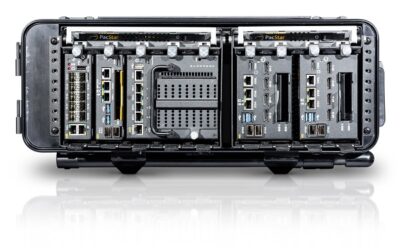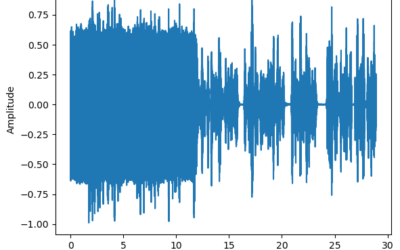US Navy League Sea-Air-Space Exposition Day 1 (9 April 2018) Start of Day Report
When this year’s exposition opened its doors, Harris was expanding its presence in the naval EW sector around the globe. The Harris label is recognised in 30 navies, including the electronic support measures suites on US Navy ‘Virginia’ class submarines and ‘Independence’ class Littoral Combat Ships. Recognising the limited availability of the company’s subject matter experts to break away from their “full time job” to complete this interview, this author focused on one area of portfolio expansion – the naval air sector.
To that end, Harris is in lot 15 full-rate production to deliver the radio frequency countermeasures (jammer part) of the next generation ALQ-214 Integrated Defensive Electronic Countermeasures (IDECM) suite for integration with Boeing’s F/A-18 aircraft. Fourteen ALQ-214 A(V)4/5 jammers will be delivered to Kuwait as part of a recently announced foreign military sales deal. Another 86 (V) 4/5s are on contract for delivery to two other F/A-18 operators, the US Navy and Royal Australian Air Force.
The ALQ-214 A(V)4/5 is an upgrade from the legacy-era (V)3 version. “The (V)4/5 is a complete technology refresh of the legacy-214 system,” Matt Klunder, the Harris Vice President for DoD Strategy & Technology, noted. “There’s the ‘V5’ upgrade for the legacy F/A-18 C/D HORNETs and ‘V4’ upgrade for the F/A-18 E/F Super HORNETs.”
Beyond nomenclature, the new jammer is elevating the F/A-18’s EW capabilities to a higher technology plateau, including migrating from a hardware-based, hardware-controlled system to more software-defined, enabling EW equipment to be upgraded more easily, and be ready to incorporate new “cognitive EW” additive technology concepts.
This allows the ALQ-214 to quickly respond to new threats.
“Software-defined is one of the important trends happening everywhere, so it is certainly happening in the electronic warfare world,” Andy Dunn, Harris Vice President for International Business Development, initially commented. “Being software defined simply means you have an RF input, you convert the RF input to digital (software) and then you go back to RF and the signal goes out. Everything is completely done in the software. You can even host multiple waveforms in that software/firmware so that it can be, by definition, ‘multi-function’.”
The next generation of software-defined multi-functional systems, which Harris calls the “Disruptor SRx,” will allow the operator to, in situ, programme and reprogramme the EW Suite to enable the platform to perform different missions, depending upon the threat; for instance, transitioning from an electronic protect asset to a data collection role. Compared to the legacy (V)3, the (V)4/5 then, this next generation architecture can serve as a platform to host new types of waveforms and other software-defined capabilities, in order to more quickly respond to emergent threats in the 2018-era battlespace and beyond.
Dunn further added this new architecture has evolved to better respond to and help compress the timeline by the use of “cognitive EW” additive technology concept: detecting the threat; collecting data; analysing and modeling the data; identifying the threat’s susceptibilities; and completing other tasks. “Today, we can’t wait that long,” the industry expert noted and continued, “we’re trying to, in situ, move away mission data file detection and jamming of threats, and be able to do more in real time – to say ‘It’s an unknown threat. But based upon the following characteristics I believe it this kind of radar, in this kind of mode, and I should or shouldn’t be worried about it.’”
Beyond focusing on cognitive EW in the broader warfare domain, the DISRUPTOR SRx is bringing to bear other internal EW-related technology needed by the warfighter, including a smaller form factor.
In the business development arena, Harris continues its dialogue with the US Navy and OEM Boeing on the nascent F/A-18 Block III and what advanced technologies a future ALQ-214 can provide to the new model. Mr. Klunder, also called attention to the increased interest by the UAS and sensor sectors in the Harris EW portfolio, driven in part by the company’s focus on smaller form factors. The retired US Navy Rear Admiral concluded, “Our partners are offering that, we may have what they need for their Group III or IV platforms [US DoD UAS categories], or for their multi-function pods on other airborne platforms. We are moving all those capabilities and technologies Mr. Dunn described earlier into our sensor suites across the naval domain – ships, submarines and even unmanned systems.”
Marty Kauchak
























